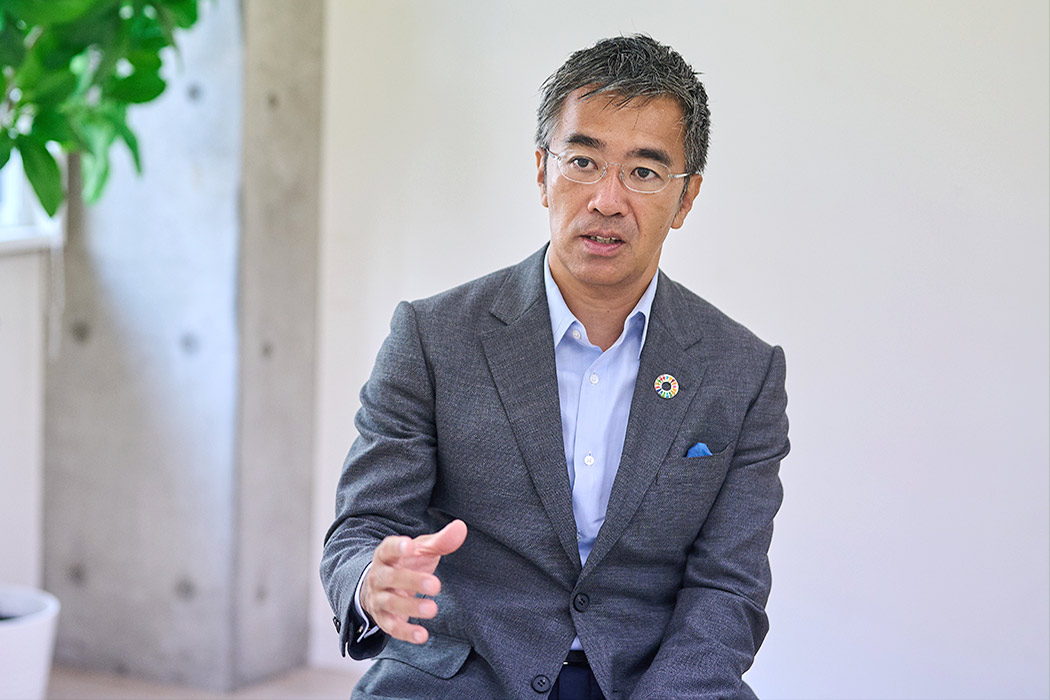
Expert Views

Norichika KanieEnjoy doing what you can for the future
First Published in Japanese in February 2023 [4 parts]
Part 3: What we have learnt from the COVID-19 pandemic

Efforts towards carbon neutrality and sustainability will help your business while also helping the environment. These are encouraging words for companies looking to tackle these issues. In Part 3, Professor Kanie gives more specific advice, as well as some insights from the COVID-19 pandemic.
── What kind of industry-wide efforts do you think are required, for example by the Japanese manufacturing industry, to achieve sustainable development?
The industry needs to keep an eye on the global market to stay in line with global standards. There is a growing focus on investments with aspects of environmental, social, and governance (ESG): basically taking these perspectives into account, as well as the normal financial considerations, when making investment decisions. In Europe, companies are already refusing to work with, or invest in, suppliers who employ illegal labor in their supply chain. Similar movements are emerging in the US, which means this is sure to become the standard way of thinking around the world in three to five years’ time. If Japan is slow to adopt this trend, it risks being squeezed out of the global market, so it needs to pay particular attention to initiatives and regulations surrounding climate change. Furthermore, international standardization is not just an issue for large companies that operate on a global scale. As large corporations start to require sustainability throughout their supply chains, small and medium-sized enterprises that do not respond will not only lose work, but could also feel the effects in terms of bank lending. All companies need to think about sustainability as being relevant to their own business.
── What should managers keep in mind when a company is promoting carbon neutral and sustainability initiatives?
One piece of advice is to listen to what young people are saying. I founded the xSDG Consortium at Keio University in 2018, with the aim of creating and sharing case studies that demonstrate ways to achieve the SDGs. Around thirty companies and local authorities are taking part in the consortium, and one of the most common comments is: “We want to hear what students think.” They are hoping for ideas that they would never have thought of themselves. Once, at a summer camp for young people ranging from elementary school to university students, one elementary school student asked a question during a discussion about global poverty: “Rather than sitting in Japan thinking about poverty in other countries, why don’t we build a campus in one of those countries?” Adults tend to think about things in terms of what can or cannot be done. The ability to think outside the box is a strength of young people. Why not set up a forum for open discussion between anyone, regardless of position or experience? In twenty or thirty years’ time, the world will be in the hands of the young people of today, so listening to what they are saying is a good way of thinking about the future.
── You are entrusting the future to the young people of today. What are your hopes for the future of the manufacturing industry?
Japan, for example, has incredible manufacturing skills: I think there are many products that simply cannot be made anywhere else. I would like to see these technical capabilities being harnessed to achieve the SDGs and carbon neutrality. In the past, Japan forged ahead manufacturing good quality products, but taking no notice of greenhouse gas emissions. However, I believe it is possible to achieve sustainable manufacturing without compromising on quality. For example, as electric vehicles become mainstream, some components used in conventional fuel vehicles will no longer be needed, meaning the plants that produce these components will lose work. However, the technology they have developed to make components for conventional fuel vehicles can be applied to other areas. There are still seven years left to achieve the SDG targets. By then, I would like to see a rapid shift to sustainable manufacturing, and the further expansion of Japanese manufacturing.
── In Part 1, you mentioned the pandemic as one of the factors that has hindered progress towards the SDGs. How do you view the COVID-19 pandemic now?
As you know, COVID-19 put a stop to all aspects of life for a while; no school, no events, no goods coming into the country. What this showed us was that our society was not sustainable. When we realized that we needed to create a sustainable society, we learned new ways of working and new ways of communicating. It is no exaggeration to say that the pandemic also highlighted the need for digital transformation. Thinking in terms of the SDGs, perhaps we could say the 17 goals show the flip side of the risk of everything stopping as it did during the pandemic. Energy shortages, natural disasters due to climate change, growing poverty… I’m sure many people realized the need to make the world sustainable in the face of these threats. The pandemic caused suffering and grief for many, but it was also an opportunity to reaffirm the importance of sustainability. I hope this is also a chance to deepen understanding of the SDGs.